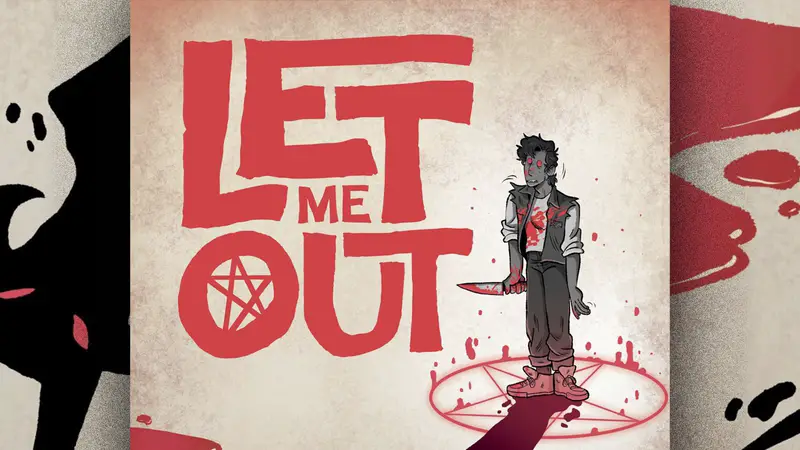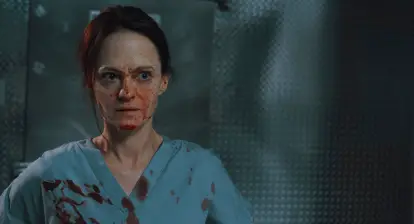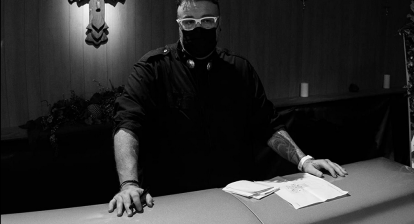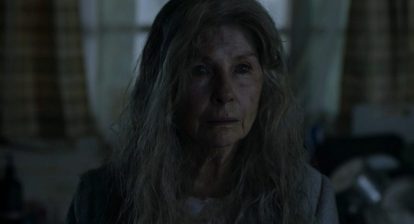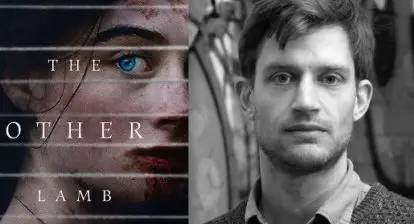Emmett Nahil has been described as a “literary jack of all trades.” He is a writer, narrative designer and game developer residing in what he dubs a haunted town somewhere north of Boston.
Emmett is about to add a new credit to his literary bona fides. His graphic novel, Let Me Out releases Oct. 3 from Oni Press with an eye toward Halloween-season readers.
Set in the late ‘70s, the work’s official description calls it “a tribute to queer cinema and vintage revenge-exploitation films.”
British illustrator George Williams (Croc and Roll) brings Emmett’s story to life with his unique style.
In the story set just on the cusp of the Satanic panic era in a small town, the body of a pastor’s wife is discovered and and Mitch, Terri, Lupe, and Jackson, a circle of LGBGTQ+ misfits. They are soon falsely accused by the local sheriff and an FBI agent of devil worship and murder.
To fight back and seek revenge, they decide embracing what everyone’s worried about might be the best approach.
“Emmett Nahil and George Williams have created a riveting, timely tale of terror,” said Oni Press Editor-in-Chief Sierra Hahn. “It’s a stunning, supernatural graphic novel debut that will appeal to fans of classic revenge flicks and horror movies like Carrie and The Craft.”
Emmett recently fielded a few questions from Wicked Horror about his graphic novel debut and the development of Let Me Out.
WH: Fiction often reflects the time in which it’s written, and it offers an interesting lens for re-examining different times. What led you to 1979 as the setting for a horror tale in 2023?
Emmett Nahil: I think that 1979 was just such a wild moment in politics and culture. It was post-Nixon, post-Watergate, the Senate Hearings on MKUltra had just happened, the Iranian Hostage crisis was about to begin, y’know? And on top of all that, there was also this reactionary streak growing in the US. With the beginning of the whole ‘return to family values’ Reagan era, the narrative was turning against gay people during the worst part of the HIV epidemic in a profoundly awful way. To me, it was a transitional period, and it left people looking for scapegoats, which meant that a lot of folks took the Satanic Panic very seriously.
Did You Know? Wicked Horror TV Has Classic and Independent Horror Films Available to Stream for Free!

WH: How did you go about re-searching the late ‘70s?
Emmett Nahil: I really enjoy viewing history through a cultural lens, and listening to music that was in conversation with the alternative scene really helped me access the headspace that Mitch and his friends would have occupied. X-Ray Spex, The Ramones, The Clash, The Velvet Underground, and The Slits were all incredibly cool to me already. Looking at what movies were out in that time like The Amityville Horror, Phantasm, Alien…. those were all really important in building out their world of multimedia in the culture. Checking out how local papers were covering the punk scenes of the era really helped get a scope for how these kids might have been perceived from the outside in too.

WH: Did you find any surprises as you looked into that time period?
Emmett Nahil: In a way, I was pleasantly surprised to see a sort of de facto acceptance there was for queer and gender non-conforming people within those scenes, even as the wider culture was starting to dig into the “traditional values,” prosperity gospel type stuff of the 80’s. Obviously nothing was perfect, but you see a lot of places, especially in New York, where the scene was a lot more fluid and more interesting than it’s remembered to be.
WH: What similarities do you see between then and now? We certainly seem to be in an era where, in some circles anyway, there’s a fear of anyone different.
Emmett Nahil: I think clearly wherever there’s change or crisis, wherever the boundaries of the culture are being challenged, reactionary attitudes will emerge from the muck. I think a lot of older, conservative politicians were coming up in this era where Evangelical politics were getting their claws in the country in a more significant way, and we’re seeing the effects of that now in America. We’re in a time now where wannabe fascists have less control than ever over young people, and they’re scrambling for influence and power by finding scapegoats wherever they can. This time it’s with this stupid anti-trans panic.
WH: Characters are often what help set a story apart. How fresh characters experience something like a deal with the devil really seems to make a tale all new. You offer a diverse circle of friends, all marginalized in their small New Jersey community. How did you go about crafting your mix of characters for Let Me Out?
Emmett Nahil: I honestly don’t think about crafting characters in isolation. For me, the story and environment come first, and then I think about what kind of characters would best be able to let me access that story, and would fit into the environment. The idea of a different view on the Satanic Panic came first, and then what kind of characters would be targeted by a MKUltra-style government program came after.
WH: Did you think of yourself as inverting a familiar horror trope as you worked on Let Me Out?
Emmett Nahil: I think I tried my best to invert some tropes, by nature of the way the main characters interact with the world around them, and by challenging the idea of what evil actually is. But I’m not ashamed to admit that I still have a huge soft spot for retro tropey-ness played straight. I think you can invert some things while keeping the fun and goofy parts of those elements. They’re not really kids, but there’s an element of the Stephen King-ish, kids on bikes of it all in Let Me Out. The eau de Carrie, you could say.
Also See: Ray Bradbury EC Comics Adaptations are Home to Stay! [Review]
WH: George Williams has an interesting style. How did your teaming up come about, and did you find his style was particularly suited for Let Me Out?
Emmett Nahil: George is incredibly fucking talented, and brought so much emotional weight to the story. He’s a great collaborator and a co-author in every sense of the word, and had so much to do with how the story came together. I initially put out a call on Twitter (RIP) and George happened to respond, which was fantastic, because I’d been watching him get more into spooky stuff artistically speaking for a minute, and was hoping he would be interested. We chatted a bit about goals and vibes for the story, and I knew he could blend a kind of distinctively punk aesthetic with straight-down-the-line horror, which was obviously perfect for the comic.
Also See: Jay Stephens Discusses the Prestige Format Re-Issue of ‘Dwellings’ [Exclusive]
WH: Shifting gears a little, have you ever been scared by a horror comic, true chills along the spine, hair standing up? Which comic was it, if so, and why do you think it had that impact?
Emmett Nahil: The Enigma of Amigara Fault was the first comic that really, genuinely freaked me out. Coming across Junji Ito’s work as a teen, when I wasn’t really familiar with Japanese comics, let alone his work as a mangaka felt like a color out of space. Gyo as a whole is fantastic, but there’s just such a sense of cosmic terror and implications for a horror bigger than you can understand that grows off the page and infects your brain. Maybe one day I’ll be able to invoke that in my work.
WH: Are there some other favorite horror comics? What about horror films that were influential.
Emmett Nahil: I will buy anything that Cullen Bunn does, and Harrow County is one of my favorites: I think it really influenced how I wrote Columbiania in Let Me Out. The Nice House on the Lake is a stunner, and I was lucky enough to read Vol. 1 of Mads and Son M.’s Something Crawled Out (which is coming from Vault this October) which I love to death. I think a really influential film overall was The Green Room… the setup of punks having to fight off fascists is so juicy to me. I already mentioned Carrie, but the de Palma movie as well as the original book were both patron saints in how I thought about what tone I wanted to invoke in Let Me Out.
Also Read: The Sixth Gun’ Creators Talk Omnibus Edition, More Tales in the Works [Exclusive]
WH: Where can those who are interested learn more about Let Me Out?
Emmett Nahil: Many places! Let Me Out releases on October 3rd wherever books are sold, and it’s currently on NetGalley and Edelweiss for reviewers. We’d appreciate a preorder, and I recommend bookshop.org, or pre-ordering via Simon & Schuster’s website. I can be found most places under the username @_emnays, and at my own website, emmettnahil.com.
Follow us on: Twitter and Facebook.
